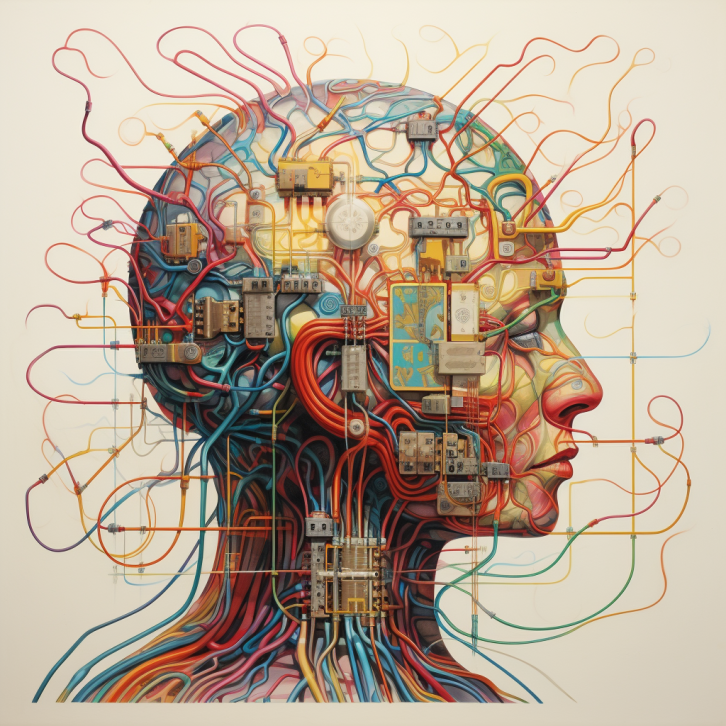Neuromodulation techniques that stimulate the nervous system through electric current are revolutionizing the treatment of neurological and psychiatric disorders like depression, movement disorders, and chronic pain.
These techniques allow for precisely targeted treatment of specific brain regions.
Key facts:
- Neuromodulation techniques include invasive methods like deep brain stimulation (DBS) as well as non-invasive methods like transcranial magnetic stimulation (TMS).
- DBS has shown dramatic results for movement disorders but more mixed results for psychiatric illnesses.
- Non-invasive techniques like TMS and transcranial direct current stimulation (tDCS) show promise for treating depression, PTSD, dementia, and brain injuries.
- Focused ultrasound is an emerging non-invasive technique that can target deep brain regions.
- Integration of brain imaging and patient data from wearables can enable extremely precise targeting of neuromodulation.
Source: Cerebrum
A Brief History of Neuromodulation
The term “neuromodulation” refers to the direct stimulation and modification of the nervous system using electrical, chemical, or mechanical signals.
Though the concept has been around for decades, the use of neuromodulation to treat brain disorders has expanded rapidly in recent years.
The origins of modern neuromodulation can be traced back to the 1980s when French neurosurgeon Alim Benabid discovered that electrically stimulating the basal ganglia could reduce the tremors associated with Parkinson’s disease.
This laid the groundwork for the technique known as deep brain stimulation (DBS).
Though DBS has roots in some ethically questionable studies, it has transformed treatment for movement disorders like Parkinson’s.
Recently, DBS applied to a brain region called the subgenual cingulate has also shown promise for treating severe treatment-resistant depression.
However, results for psychiatric disorders remain mixed compared to movement disorders.
Non-Invasive Techniques Emerge
In addition to invasive methods like DBS, non-invasive neuromodulation techniques have also emerged.
These allow for targeted brain stimulation without surgery.
Transcranial magnetic stimulation (TMS) uses strong magnetic pulses to induce neuronal firing in specific brain regions.
Though TMS was originally used to study the motor cortex, it is now being used and studied as a treatment for depression, PTSD, dementia, and traumatic brain injury.
Reviews suggest TMS can have real efficacy for alleviating depression when applied to the left dorsolateral prefrontal cortex.
Transcranial direct current stimulation (tDCS) is another technique that uses direct electrical current to modulate spontaneous neuronal activity patterns.
Research has explored the use of tDCS for improving memory in Alzheimer’s patients and treating conditions like fibromyalgia, though results have been mixed.
Focused Ultrasound: An Emerging Non-Invasive Method

A recent development in non-invasive neuromodulation is the use of focused ultrasound pulsation.
This technique uses precisely targeted sound waves to modify deep brain structures without any surgical procedure.
Early research has explored focused ultrasound for treating psychiatric and neurological disorders.
It provides a way to reach deeper brain structures compared to other non-invasive methods like TMS.
Many studies are still needed to optimize the use of focused ultrasound for neuromodulation and map out its effects on different brain regions and disease states.
But it offers unique potential for non-invasive treatment of deep brain areas.
Optimizing Targeting Through Neuroimaging and AI
A major challenge in neuromodulation is precisely targeting specific brain regions linked to a patient’s symptoms.
Advances in neuroimaging and AI algorithms are helping optimize targeting.
Technologies like functional MRI can identify not just brain structure, but also functional activity related to cognitive processes.
This allows neuromodulation to target areas based on their role in disease states.
In the future, integration of data from neuroimaging, wearables, and electronic health records using AI may enable extremely precise targeting.
A robotic device could then stimulate optimized brain locations to provide personalized treatment.
Shorter, More Accessible Treatment
As the field progresses, the focus is shifting to making neuromodulation more accessible, affordable, and efficient.
New protocols like theta burst stimulation can cut TMS session duration from 30-60 minutes down to just 3 minutes.
Single pulse TMS devices can even deliver treatment in less than a second.
Wearable single pulse TMS devices could one day enable at-home migraine treatment.
Reduced costs and session times will help expand access to these promising techniques.
A Revolution in Treating Brain Disorders
Neuromodulation represents a revolutionary set of techniques for precisely modifying brain function.
While questions remain about optimizing methods and targets, dramatic results are already being seen for movement and psychiatric disorders.
Integrating neuroimaging, big data, and AI holds the potential to unlock unprecedented precision in adjusting brain activity.
Shorter protocols and wearable devices can make treatments more efficient and accessible.
As neuromodulation technologies progress, they promise new hope for patients suffering from neurological and mental health disorders that have been difficult to treat with conventional methods.
Precision stimulation of specific brain circuits could offer life-changing benefits to millions.
References
- Study: Rewiring the brain: zapping with precision
- Author: Maheen Mausoof Adamson PhD







